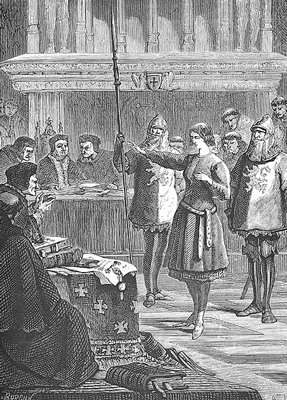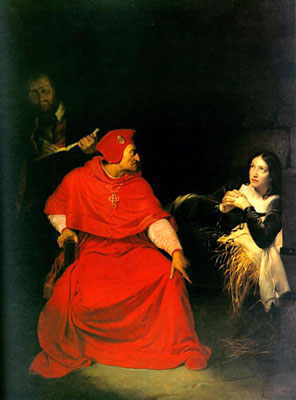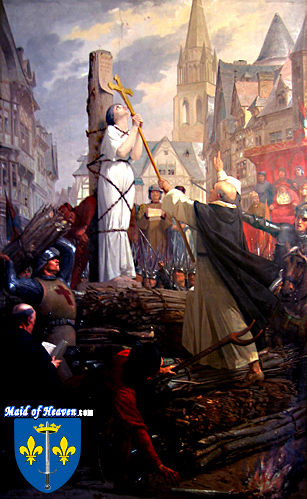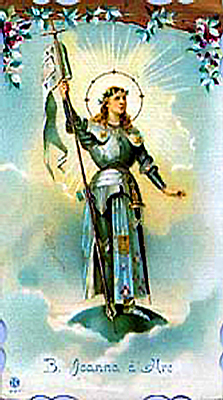
Joan was held in a prison cell shackled to her bed. She should have been held in a Church prison guarded by women but the English refused to allow it and kept her closely guarded by their soldiers.
Joan became very ill after eating some fish on April 1, 1431.
Joan of Arc was threatened with torture unless she denied her Voices.
 Painting of Joan of Arc in prison by Paul Delaroche
Painting of Joan of Arc in prison by Paul Delaroche
Joan was threatened with burning in the cemetery of St. Ouen on May 24, 1431. Pierre Cauchon and the other judges in Joan's trial knew from the start that she would burn but
they needed her to publicly renounce her Voices and everything she had done.
Joan of Arc agreed to abjure on May 24, 1431. Even Joan had a breaking point and facing the fire and death was enough to get her to finally give in to the wishes of her Judges.
Joan of Arc was pronounced a relapsed heretic and sentenced to death on May 30, 1431. After Joan abjured she was not taken to a Church prison as she was promised. Instead, Cauchon
and the English devised a trap so that they could say she relapsed. For three days she was threatened with rape until she resumed wearing male clothes which was enough to say she had relapsed.
Joan of Arc was burned to death on May 30, 1431.
Her last words were: "Jesus, Jesus, Jesus!"
 Painting of Joan of Arc at the stake by Jules-Eugène Lenepveu
Painting of Joan of Arc at the stake by Jules-Eugène Lenepveu
Joan of Arc's trial was overturned on July 7, 1456. In the Church's ruling, Joan was declared a martyr who was wrongly executed by corrupt partisan clergy abusing a Church trial for secular purposes.
Joan of Arc was declared venerable by Pope Leo XIII on January 27, 1894.
Joan of Arc was officially beatified by Pope Pius X on April 11, 1909.
Joan of Arc was officially canonized by Pope Benedict XV on May 16, 1920.
Joan of Arc was canonized a saint by the same Church that had once executed her for heresy.
Saint Joan of Arc feast day is celebrated on May 30.

To learn more about Joan of Arc visit the homepage of Joan of Arc - Maid of Heaven.
To link to this website about Joan of Arc add the following code to your site: